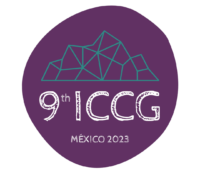Keywords : affordable housing, community land trust, property, urban policy. Abstract: Access to housing is a central challenge for contemporary policies. Community land trust (CLT) encounters a particular interest today in US, Latin America, and in Europe as a way to ensure access to affordable housing (Cabannes, 2013). CLT has been developed thanks to a long story of activism that began in the United States in the 1960s in the flow of both the civil rights movement and the struggles against Robert Moses regeneration plan of New York downtown. Considered crucial by many international experts (Angotti, 2007; Chatterton, 2013; Rolnik, 2013; Madden e Marcuse, 2016) to contrast pervasive forms of speculation and financialized gentrification (Lees et al., 2008; Aalbers, 2016), CLT is based on three founding principles: the disjunction of land ownership from the enjoyment of housing units; the rent limitations; the local, tripartite governance involving residents, the neighbor community and public stakeholders. In France, a similar institution, the Organisme de Foncier Solidaire (OFS), was recently included in the urban planning code in 2014, and in major metropolitan areas, urban policies have largely supported its development for promoting medium-income housing avoiding the ongoing middle-class suburbanization.
The paper focuses on a crossed analysis of the US and the French model approaching these institutions through the critical legal geography lens (Blomley, 1994, Blomley et al. 2001). I propose a decolonial and feminist perspective referring to the commons as an analytical framework to point out how these emerging practices produce– not public nor private - housing policies aiming to ensure the right to the city for medium and low-income people and minorities.
We argue both the French and the north American solutions represent innovative policies characterized by a disarticulation of property reversing exclusivity and promote social access (Angotti, 2007; Le Rouzic, 2019; Chardeaux, 2020). Nevertheless, recent analyses show a more fuzzy picture in the CLT American sector, with a growing number of CLT highly hetero-directed, others which are mainly managed in partnership between the public and the private social sector, and others oriented towards commodification albeit within such a protected market (Durose et al., 2021; DeFillipis et al. 2018). We can thus state how the atypical nature of CLT has promoted flexible and variegated solutions, useful in limiting rent, but with variable and often ambivalent impacts and effectiveness. Finally, despite recurrent references to the militant genealogy of the CLT, the French OFS, does not aim to promote local community participation mainly seeking the public contrast of real estate speculation and the control of public funds more than the re-politicization of affordable housing as an urban commons (Festa, 2015; Balmer and Bernet, 2015; Huron, 2018;).
Despite such critical adaptations cautionary to be scrutinized, we focus on anti-racist, feminist, and urban movements' ability to point out, on one side, a deep critical revision on property and its exclusionary effects in the city and, on the other, to propose alternative ways to govern dwellings in order to locally contrast gentrification guaranteeing the right to stay put in the neoliberal city. Nowadays, these original bottom-up policies, thanks to the transnational network of policy mobility, show a global influence proving how alternative housing institutions can play today a larger and systemic role.
Aalbers, M. 2016. The Financialisation of Housing: A Political Economy Approach. London, Routledge.
Angotti, T. 2007. «Community land trusts and low-income multi-family rental housing (working paper): The case of Cooper Square, New York City», 2007 http:// www.lincolninst.edu/ pubs/ 1 272_Community- Land-Trusts-and-Low-Income-Multifamily-Rental- Housing.
Balmer I. and Bernet T.. 2015. “Housing as a Common Resource? Decommodification and Self-Organization in Housing - Examples from Germany and Switzerland”. Urban Commons. Moving Beyond State and Market edited by Mary Dellenbaugh, Markus Kip, Majken Bienick, Agnes Katharina Müller, Martin Schwegmann, 178-195. Basel: Birkhäuser.
Blomley, N. 1994. Law, Space, and the Geographies of Power. New York: The Guilford Press
Blomley, N., Delaney, D., & Ford, R. 2001. The Legal Geographies Reader: law, power, and space Oxford: Blackwell.
Cabannes, Y. 2013. Collective and Communal Forms of Tenure, UN Special Rapporteur on Adequate Housing, Background Paper.
Chatterton, P. 2013. «Towards an agenda for post‐carbon cities: Lessons from Lilac, the UK's first ecological, affordable cohousing community», International Journal for Urban and Regional Research, vol. 37, n° 5, pp. 1654-1674.
Chardeaux M.-A. 2020. « Repenser la propriété pour promouvoir la solidarité. À propos du bail réel solidaire », Délibérée, vol. 10, no. 2, pp. 38-42.
DeFilippis, J., Brian S. and Williams O. 2018. «W(h)ither the community in community land trusts? », Journal of Urban Affairs, , 40, 6, pp. 755–769.
Durose, C., Richardson L., Rozenburg M., Ryan M. and Escobar O. 2021. “Community Control in the Housing Commons: A Conceptual Typology”, International Journal of the Commons 15, 1, pp. 291–304.
Festa D. 2015. La creatività del comune in Bernardi C., Brancaccio F., Festa D. e Mennini B. (a cura di), Fare spazio. Pratiche del comune e diritto alla città, Mimesis, Milano-Udine, pp. 81-97.
Huron, Amanda. 2018. Carving Out the Commons: Tenant Organizing and Housing Cooperatives in Washington, D.C. University of Minnesota Press.
Lees Loretta, Tom Slater, Elvin Wyly and Winifred Curran. 2008. Gentrification, Routledge.
Le Rouzic, Vincent. 2019. Essais sur la post-propriété : les organismes de foncier solidaire face au défi du logement abordable, thèse de doctorat, Univ. Paris 1.
Madden, David and Marcuse, Peter. 2016. In Defense of Housing. The Politics of Crisis. London/New York, Verso.
Rolnik, R. 2013. « Late Neoliberalism: The Financialization of Homeownership and Housing Rights», International Journal of Urban and Regiona Research, vol. 37, p. 1058–106
